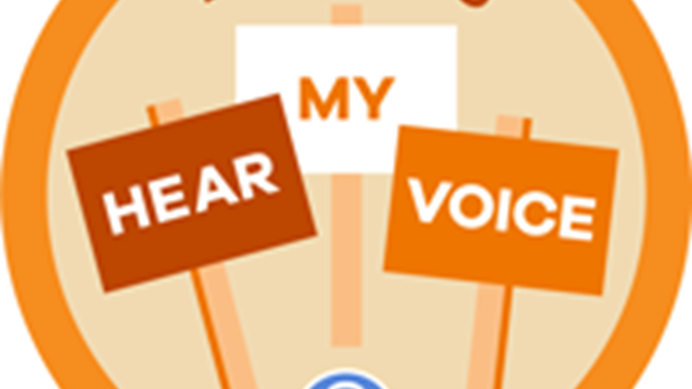

Interest badges
Protesting

Take action
Protest to make change happen
Discover different ways to protest, find out what you care about and make your own protest.
Getting a Rangers interest badge
There are 18 interest badges for you to earn at Rangers, and 3 fun challenges to do for each badge.
You can do these badges at any time, anywhere and in any way you’d like. You can do them on your own or with units, during unit meetings, at home or even on holiday.
How to complete this badge
1. To buy or not to buy
Boycotting is a peaceful way of protesting. You choose not to buy, use or give money to a person, organisation or country to show you don’t agree with something they’ve done. It’s about getting your message across by hitting them in the pocket. But is it worthwhile?
Think about something you want to boycott – it could be a type of product, unethical corporation, place or media outlet.
Boycott it for a week, then share your thoughts. Explain the impact you think you made. If more people joined you, what influence would you have?
2. How to protest safely
As well as being exciting and uplifting, protests can be tense and involve lots of people. So it’s vital to know how to stay safe.
Make a guide for young people on how to protest safely. You can decide who this guide is aimed at.
When making your guide, think about relationships with people at the protest:
- The other protesters - peaceful and non-peaceful.
- The people you’re protesting against.
- The police and protest marshals.
- The media.
- General public.
How should you treat them? How should they treat you? Look at organisations like Green & Black Cross for ideas.
3. Make your own protest
When you think of a typical protest, it probably involves marching, placard waving and chanting. However, there are many other ways you can show your support for a cause – some without even leaving your own home.
Pick an issue that’s important to you, and use alternative protesting methods to protest in as many creative ways as you can. For example, letter writing, going on strike, through social media, wearing symbols or making displays. You can protest inside or outside - including from your house, unit, an outside space in your local area or school.
Look at historical protests for ideas:
- Ban the bomb
- Civil rights movements
- Black Lives Matter
- Women’s suffrage movements
- Refugees Welcome
- Girlguiding’s sexual harassment in schools campaign
- Birth of guiding at Crystal Palace in 1909
- Boy band break-up protests
Out and about safety
- Plan your route before you go.
- Make sure someone knows where you're going and when you’ll be back.
- Pay attention to what’s happening around you. Only do your activity when you are somewhere safe.
- Always keep to the Green Cross Code and remember to wear reflective or bright clothes and accessories. When you’re out at night, wear reflective clothing or accessories like reflective armbands.
- Have a way of contacting someone if you get stuck (for example, having a charged phone).

















